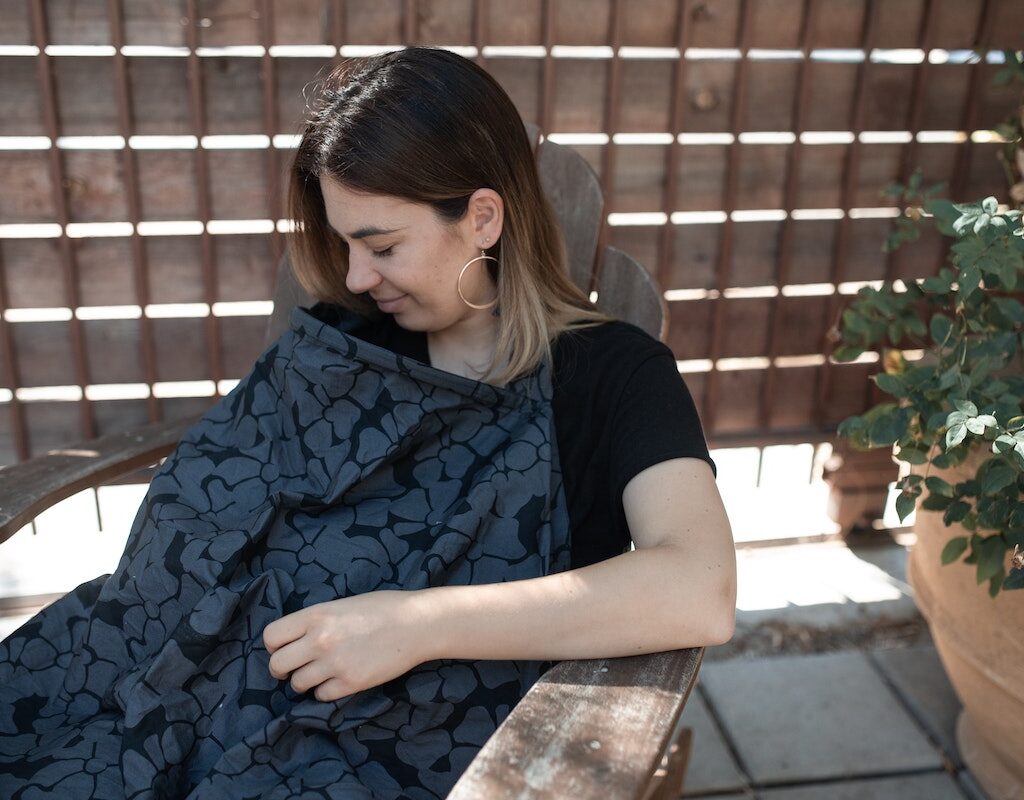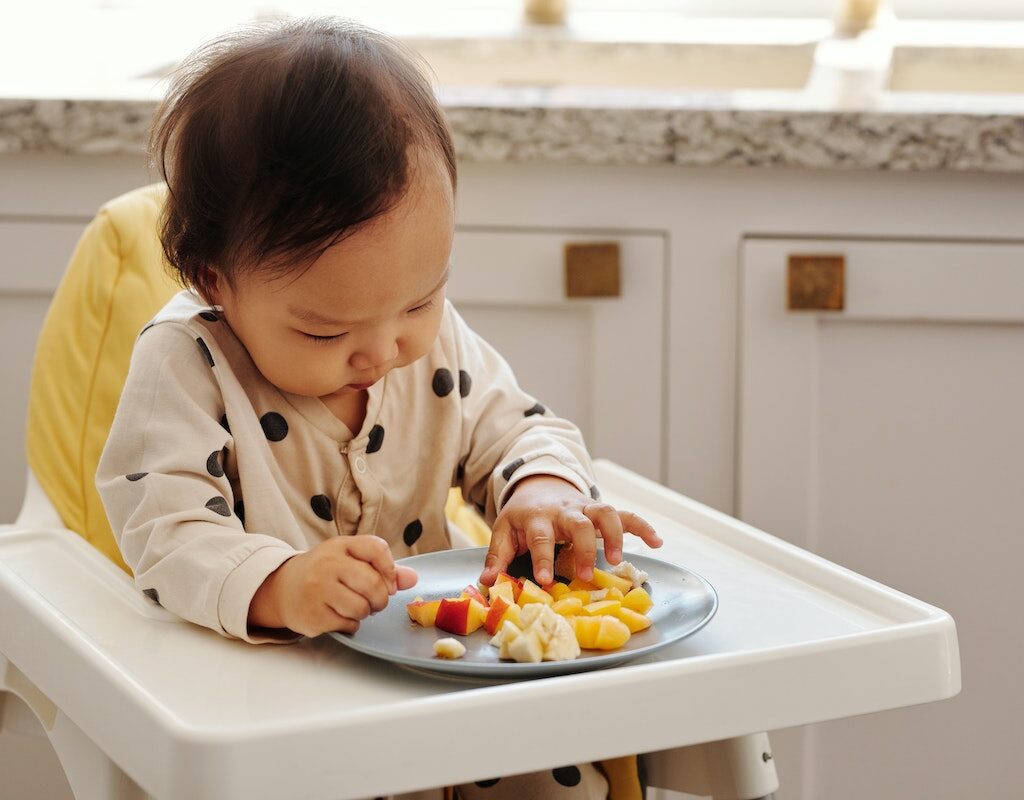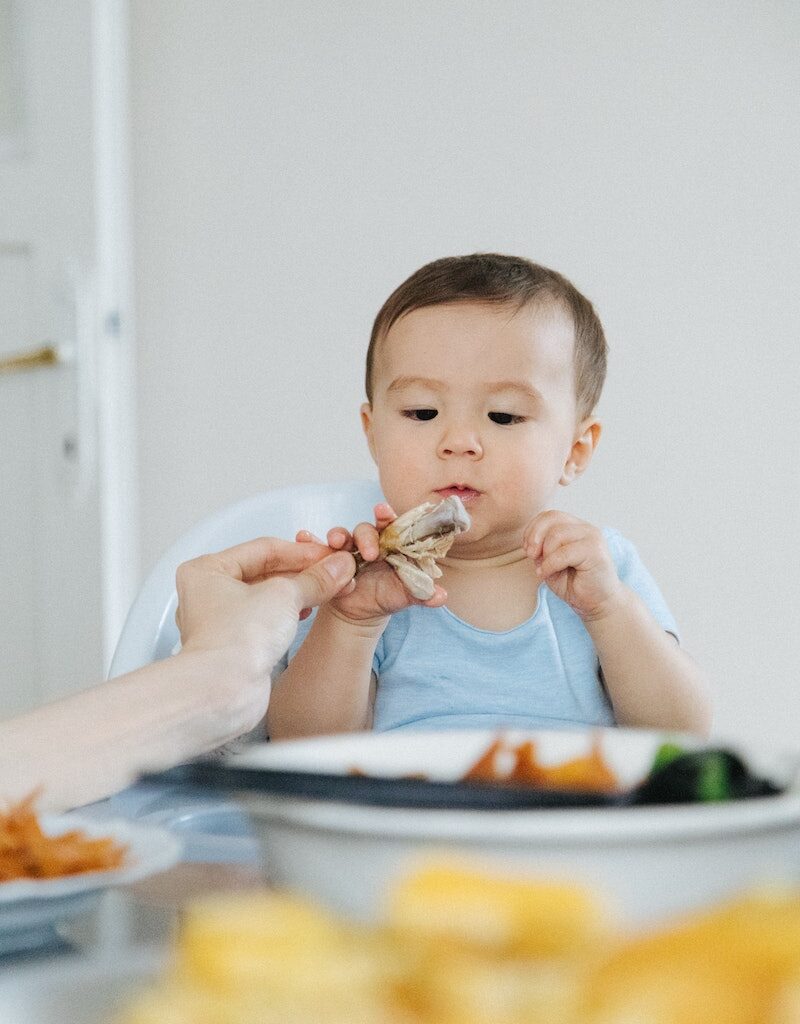Do you have a little one at home who is starting to get interested in food? Or maybe your baby is already eating solid foods, but you’re not sure what to give them next? Check out our complete baby food chart!

This blog post will outline every stage of development and provide a list of recommended foods for each stage. We’ll also give you tips on making baby food at home. So whether your child is just starting with solids or they’re ready for some more challenging meals, we’ve got you covered!
There are a few things to keep in mind when it comes to baby food. First of all, always consult with your child’s paediatrician before starting solid foods. They will be able to give you the green light and let you know if your baby is developmentally ready for solids.
Secondly, start with just a few bites at first and gradually increase the amount as your baby gets used to eating from a spoon. And lastly, don’t be afraid to get creative! There are so many healthy and delicious foods that babies can eat, so have fun exploring new flavours and textures with your little one.
Now let’s take a look at the different stages of baby food development and what kind of foods are appropriate for each stage.
Newborns

For babies 0-6 months old, WHO recommends exclusive breastfeeding. This means that baby should have only breast milk for nutrition and no other liquids or solids, not even water. Baby’s appetite will increase as they grow, and they will start to want to feed more often.
You can continue breastfeeding on demand or try baby-led solids when the baby is ready. Some signs that the baby is ready for solid food include sitting up with support, showing interest in food, and chewing motions. It is recommended to wait at least four months to start solid food.
Stage One: First Foods
The first stage of baby food introduces your child to new flavours and textures. At this stage, you will want to start with single-ingredient foods that are smooth in texture. Some great first foods include pureed fruits, pureed vegetables, cooked cereals, and yoghurt. You can either buy pre-made baby food or make it yourself using a blender or food processor. Remember to avoid adding any salt, sugar, or other seasonings until your child is older.

Stage Two: finger Foods
Once your child is around eight months old, they may be ready to start exploring different textures and attempting to feed themselves. This is the perfect time to start introducing finger foods! Some easy and nutritious finger foods for babies include cooked pasta, soft fruits and vegetables, Cheerios, pieces of toast, and crackers. Just make sure that the food is cut into small pieces and has no sharp edges.
Stage Three: Toddler Meals
As your child grows older, they will be able to handle more challenging textures and flavours. At this stage, you can start giving them bigger pieces of food to chew on, adding some light seasonings. You can also introduce them to new foods such as meat, poultry, fish, beans, tofu, whole grains, and dairy products. Just be sure to cook the food well and cut it into small pieces so that your child can easily chew and swallow it.
Stage Four: Family Foods

As your child gets older, they will be able to eat the same foods as the rest of the family. Just be sure to cut them into small pieces and avoid giving them any foods that are hard to chew or swallow.
Stage Five: Advanced Foods
At this stage, your child can eat just about anything! Just be sure to cut their food into small pieces and avoid giving them any hard-to-chew foods. Remember to always consult with your child’s paediatrician before starting solid foods, and have fun exploring new flavours and textures with your little one.
Tips to make baby foods at home
First, choose a food that is soft and easy to mash. Good options include ripe bananas, cooked sweet potatoes, and avocado. Start with small amounts of food, gradually increasing as your baby gets used to eating solid foods.
Next, use a fork or potato masher to mash the food until it is smooth. You can also put it in a blender or food processor if you want a smoother texture.
Once the food is mashed, add breast milk or water to thin it out. Then, taste the mixture to ensure it isn’t too bland or too spicy for your baby.

Finally, spoon the mixture into an ice cube tray or freezer-safe container. Once it’s frozen, you can pop out a portion and heat it up as needed. Homemade baby food can be stored in the freezer for up to 3 months.
So, there you have it! Everything you need to know about feeding your baby. We hope that this comprehensive guide was helpful and gave you all the information you need to make healthy food choices for your little one.
If you have any questions or concerns, please don’t hesitate to reach out to us. And be sure to check back often; we will continue to update this chart on baby nutrition.
Thank you for reading!😊

